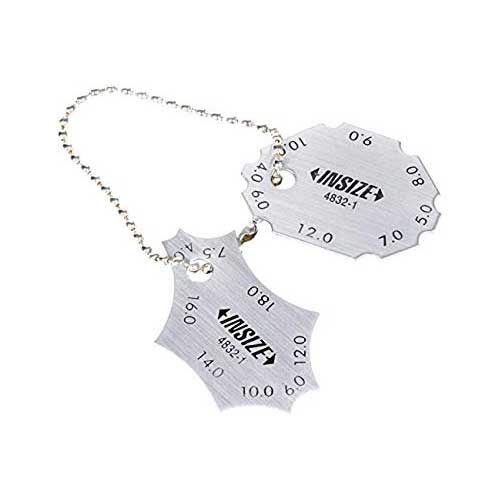Fillet Weld Layout Strategies: Maximizing Joint Performance and Appearance for Structural Stability
In the realm of structural design and manufacture, the significance of fillet weld style methods can not be overemphasized. By thoroughly thinking about aspects such as weld profile optimization, material choice, joint prep work techniques, welding process performance, and aesthetic improvement makers, designers and techniques can achieve a harmonious balance in between performance and look in their bonded frameworks.
Weld Profile Optimization

Achieving an optimum weld profile includes a meticulous consideration of elements such as material thickness, joint setup, welding placement, and desired welding speed. Additionally, the selection of ideal welding criteria, such as voltage, existing, and take a trip rate, is fundamental in managing the shape and dimensions of the fillet weld. Using sophisticated welding methods, such as pulse welding or robotic welding, can additionally improve the weld profile to fulfill certain style demands and top quality criteria.
Essentially, weld profile optimization is a fundamental facet of fillet weld design that straight affects the general efficiency and dependability of welded joints in structural applications.
Material Selection Considerations
When taking into consideration material choice for fillet weld layout, the compatibility of the base metals is a vital variable influencing the structural integrity of the joint. It is necessary to select products that not just bonded with each other successfully however likewise possess similar mechanical buildings to make certain the load is uniformly distributed between the base and the weld metals. Welding materials with significantly different homes can bring about issues such as stress focus, early joint failure, or splitting.
Furthermore, the setting in which the bonded structure will operate have to be taken into consideration when picking materials. Aspects like rust resistance, temperature level changes, and direct exposure to chemicals can all influence the long life and efficiency of the weld joint. By picking products that are ideal for the intended application and environment, the total durability and reliability of the bonded joint can be significantly enhanced.
Therefore, extensive factor to consider of product compatibility and ecological variables is extremely important in ensuring the weld joint's stamina, toughness, and total structural stability.

Joint Preparation Strategies
Taking into consideration the critical role material option plays in making certain the architectural stability of fillet weld joints, it is essential to carry out specific joint preparation techniques that maximize the connection in between the base steels. Joint preparation is a crucial step that straight influences the top quality and stamina of the weld.
Additionally, tack welding the parts in location before the last weld assists maintain alignment and reduces distortion during the welding process. By carefully following these joint preparation methods, welders can boost the overall performance and visual appeals of fillet weld joints while ensuring structural strength.
Welding Process Effectiveness
Efficient welding procedures are vital for accomplishing optimal productivity and quality in fillet weld manufacture. Processes like gas metal arc welding (GMAW) and flux-cored arc welding (FCAW) are generally made use of for fillet welds due to their flexibility and rate.
Furthermore, ensuring appropriate equipment setup and upkeep is essential for reliable welding. Normal calibration of welding makers, examination of consumables, and maintenance of welding lanterns can prevent downtime and remodel, eventually conserving time and resources. Furthermore, utilizing skilled welders with knowledge in the anonymous particular welding process being utilized important site can dramatically impact effectiveness. Well-trained welders are a lot more adept at readjusting parameters, repairing concerns, and keeping constant weld quality.
Aesthetic Improvement Techniques
To optimize the quality of fillet weld manufacture, carrying out visual improvement approaches can play a crucial role in making sure precision and precision during the welding process. Aesthetic enhancement techniques include various methods focused on improving the look and quality of fillet welds. One usual method is the usage of back purging systems to get rid of oxidation on the behind of the weld, causing a cleaner, more aesthetically pleasing surface. Furthermore, utilizing proper lights arrangements in the welding location can improve exposure, enabling welders to keep track of the weld pool and guarantee consistent grain development. Aesthetic aids such as weld size determines and multiplying lenses can aid in analyzing weld accounts and dimensions precisely. The usage of contrasting marking materials or short-lived tacking can aid in straightening and positioning the workpieces exactly prior to welding. By integrating these aesthetic enhancement techniques right into the welding procedure, welders can accomplish not only structurally audio fillet welds but also visually appealing outcomes that satisfy market requirements.

Final Thought
Finally, optimizing fillet weld design involves careful consideration of weld profile, material choice, joint preparation, welding procedure effectiveness, and aesthetic enhancement methods. By carrying out these approaches, architectural honesty can be enhanced while also attaining aesthetic appeal. It is vital to focus on both performance and looks in fillet weld design to guarantee the overall quality and toughness of the joint.
By diligently taking into consideration variables such as weld profile optimization, product option, joint preparation methods, welding process efficiency, and visual improvement approaches, fabricators and engineers can attain a see this website harmonious equilibrium between capability and appearance in their bonded structures.In the realm of fillet weld layout, maximizing the weld profile plays an important role in guaranteeing structural stability and efficiency. The weld account, which consists of the dimension and shape of the weld cross-section, directly influences the circulation of anxiety and load-bearing capacity within the joint. It is crucial to select products that not just bonded together efficiently but also have comparable mechanical buildings to guarantee the tons is uniformly dispersed in between the weld and the base metals - Gauge Fillet Weld.In final thought, optimizing fillet weld style entails careful consideration of weld account, product selection, joint preparation, welding process effectiveness, and aesthetic improvement methods